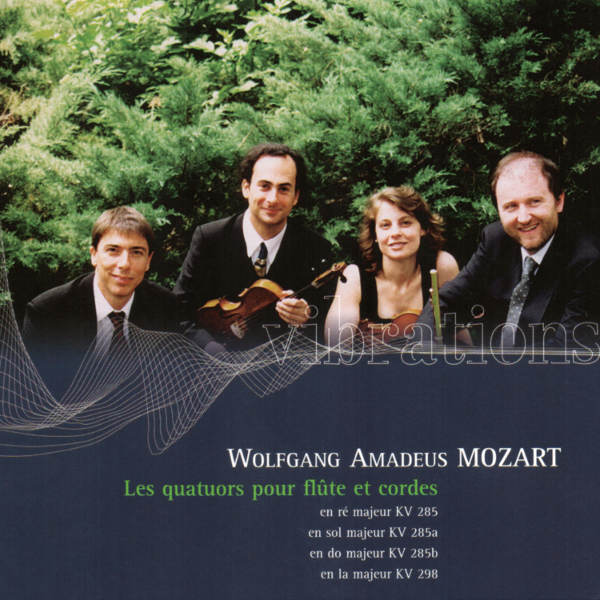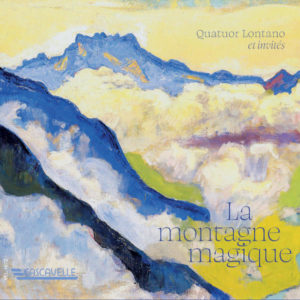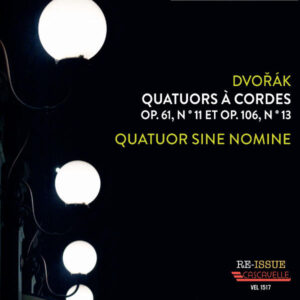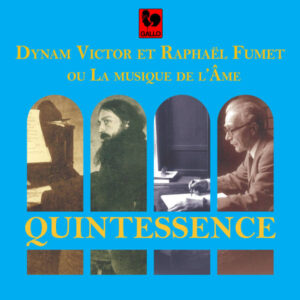Extraits / Excerpts
Mozart : Flute Quartet, K. 285, K. 285A, K. 285B, K. 298 – Bruno Grossi – Isabella Piccioni – Juan Lucas Aisemberg – Pierpaolo Toso
Wolfgang Amadeus MOZART : Flute Quartet No. 1 in D Major, K. 285 – Flute Quartet No. 2 in G Major, K. 285a – Flute Quartet No. 4 in C Major, K. Anh. 285b – Flute Quartet No. 3 in A Major, K. 298.
Bruno Grossi, Flute – Isabella Piccioni, Violin – Juan Lucas Aisemberg, Viola – Pierpaolo Toso, Cello.
THE FLUTE QUARTETS
If we consider the creative range of Mozart and the compositions he wrote for wind instruments, it is, to say the least, surprising to note his out-of-the-ordinary new experimentations with instrumental combinations that are striking both for their inventively fresh style and for their formal vivacity, although flute quartets can certainly not be counted among the works that fall within the realm of the so-called “art of confession.”
The correspondence of the Austrian genius provides us with a somewhat imprecise and contradictory indication of the origins of this work and the only certain date is that of the quartet in D major KV 285 that was preserved in hand-written form up to the Second World War and that bore the inscription “Mannheim, 25 December 1777”. It is to be noted that the other two quartets can be considered together with this composition. KV 285a and KV 285b, composed on the specific commission of a rich Dutch flautist who asked Mozart for “three little concerti, short and easy to play, such as some quartets for flute”. If to this we add the fact that in a letter to his father, Mozart admits having unwillingly written for an instrument that he “could not stand”, that is to say the flute used as predominant instrument, we have subsequently to wonder on hearing these works at the mastery with which they were written and the various states of mind that they elicit. In particular, in KV 285 in D major, we recognize elements of composition that are definitely influenced by the Mannheim school while nonetheless differing from it in the solutions of the central tempo, an adagio with high peaks of expressiveness achieved by using an expressive form entrusted to the flute and supported by pizzicati “detached” from the melody with chromatic harmonics of great substance.
The quartet in A major KV 298 was not specifically commissioned. It was, rather more, freely composed for a group of friends. If one notes the inscription appended to the last movement “Rondieaoux, Allegretto grazioso, ma non troppo presto, pero non troppo adagio, Cosi-cosi con molto garbo ed espressione”, the somewhat jocund style was apparent meant only for the people with whom the composer had not only jovial but also intimate relations, in particular the family of Baron Gottfried von Jacquin that was in contact with the Mozart family in Vienna. The composition, beginning on a theme (drawn from an opera by Paisello), continues with variations (one for each instrument) and is full of spirit and joviality. Mozart works in a bit of a minuet followed by a rondo with the “exhortation” given above as to how it was to be played, as a gesture of gallantry, on the one hand, and of ribaldry, on the other.
Bruno Grossi
- Categories
- Composers
- Interprets
- Booklet












